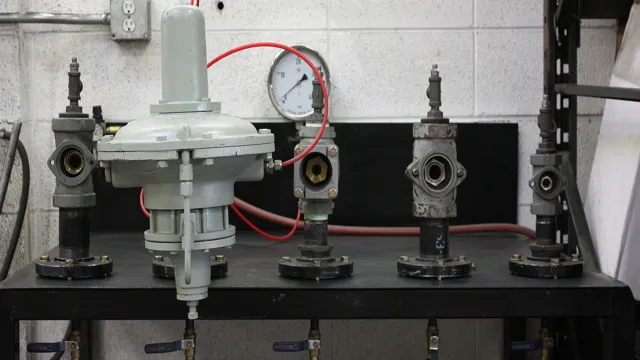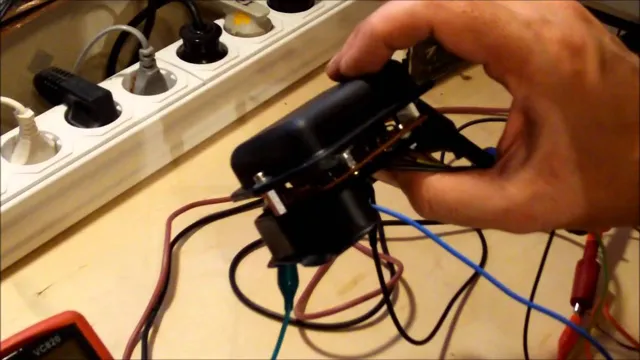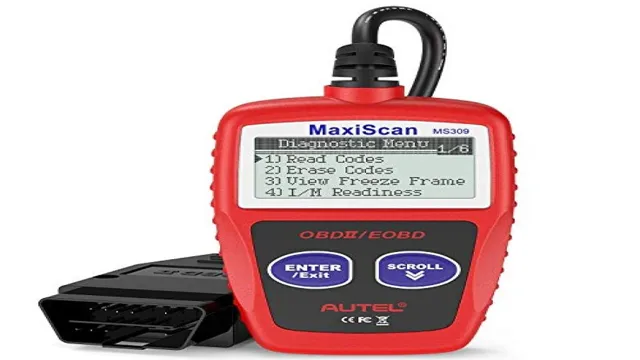Power Up Your Knowledge: Step-by-Step Guide on How to Bench Test a Voltage Regulator
As electronic devices become an integral part of our everyday lives, the importance of voltage regulators cannot be overstated. These devices are responsible for ensuring that electrical devices operate within safe and optimal voltage ranges. However, the effectiveness of these devices can only be guaranteed by bench testing them thoroughly before they are put to use.
Bench testing voltage regulators involve subjecting them to various stress tests that mimic real-world scenarios to determine their ability to handle sudden voltage fluctuations and ensure that they maintain stable output voltage ratios. In this blog post, we will delve deeper into the process of bench testing voltage regulators, including the various tests that regulators undergo and the importance of carrying out these tests to ensure high-quality performance and safety.
Overview
If you want to ensure that your voltage regulator is working correctly, bench testing is the best way to go about it. To bench test a voltage regulator, you should first locate it on your vehicle or equipment. Then, disconnect the regulator from the system to which it is attached.
Once you have the regulator isolated, connect it to a battery with jumper wires. Next, use a voltmeter to measure the voltage output from the regulator. Depending on the type of regulator, you may need to test different inputs and outputs.
Follow the manufacturer’s instructions to avoid damaging the equipment or getting inaccurate readings. By testing your voltage regulator, you can determine whether it is functioning correctly and address any issues before they cause problems. Overall, bench testing is a simple and valuable process that can ensure the safe and efficient operation of your equipment.
What is a voltage regulator?
A voltage regulator is a device or circuit that stabilizes the voltage output of a power source. Essentially, it ensures that the voltage supplied to an electronic device or machine remains constant, regardless of any fluctuations in the input voltage or changes in the load being drawn by the device. This is important because most electronic devices require a specific voltage range to function properly, and voltage fluctuations can cause malfunctions or damage.
A voltage regulator works by using feedback mechanisms to monitor the output voltage and adjust the input voltage or resistance as needed to maintain a steady output. It can be found in a variety of applications, from small handheld devices to large power grids. By regulating voltage, this device ensures that electronics can operate smoothly and reliably.

Why bench test a voltage regulator?
Voltage regulator Overview: Voltage regulators play a vital role in regulating the voltage level of any electrical system and prevent any damages caused by overvoltage. It is crucial to check the efficiency and reliability of voltage regulators before installing them in any electrical system. One of the best ways to evaluate the voltage regulator is through bench testing.
Bench testing involves testing the regulator in a controlled environment to determine if it meets the required standards. It helps in detecting any faults or defects in regulators before integration with the electrical system. In this way, bench testing minimizes the chance of system failure while improving its performance.
This process also helps in enhancing the product’s quality and increasing its lifespan. Therefore, bench testing is an integral part of the quality control process, ensuring the overall stability and functionality of the voltage regulator.
Tools and Materials
Bench testing a voltage regulator is a crucial process that helps determine whether the regulator is functioning correctly and whether it is outputting the correct voltage to power a device. To bench test a voltage regulator, you will need a few tools and materials. These include a multimeter, a power supply, and jumper wires.
Begin by connecting the positive lead of the power supply to the input pin of the regulator and the negative lead to the ground pin. Then use jumper wires to connect the output pin of the regulator to the positive input pin of the multimeter, and the negative input pin to the ground pin of the regulator. Once this is done, turn on the power supply and verify that the voltage reading on the multimeter matches the desired output voltage of the regulator.
If the voltage is correct, then the regulator is working correctly. If the voltage is incorrect, then there may be a problem with the regulator, and further testing and troubleshooting may be necessary. By following these steps, bench testing a voltage regulator can be a straightforward task that ensures your device will function correctly and reliably.
Multimeter
When it comes to testing electrical circuits, a multimeter is an essential tool that every electrician or DIY enthusiast should have in their toolkit. A multimeter is a versatile device that can measure various electrical quantities such as voltage, current, and resistance. It consists of a display screen, two probes, and a rotary knob that allows you to switch between different modes.
To use a multimeter, you need to ensure that it is set to the correct mode for the measurement you want to make. For example, if you want to measure the voltage across a circuit, you need to set the multimeter to the voltage mode, and then connect the probes across the component you want to test. The multimeter will give you an accurate reading of the voltage.
Multimeters are available in different types, such as analog and digital. While analog multimeters use a needle to display the readings, digital multimeters offer more precise readings and are easier to read. Some multimeters even have advanced features such as auto-ranging, which automatically selects the correct mode and range for the measurement.
Overall, a multimeter is a must-have tool for anyone working on electrical circuits. It helps to ensure that the circuit is working correctly, and also helps to diagnose any issues that may arise. So, invest in a good quality multimeter and take your electrical work to the next level!
Bench power supply or automotive battery
When it comes to working on electrical projects, one of the most crucial decisions to make is whether to use a bench power supply or an automotive battery as your power source. Both options have their advantages and disadvantages, so it’s important to consider your specific needs and circumstances. A bench power supply is a reliable and safe option that provides steady and regulated voltage, which is essential for sensitive electronic components.
It’s also convenient and easy to adjust the voltage and current settings to your desired levels. However, it’s not portable and requires a stable power source. On the other hand, an automotive battery is highly portable and can be used in a wide range of locations.
It also provides a high amount of power, making it suitable for heavy-duty projects. However, it can be dangerous if not used properly, as it doesn’t provide regulated voltage. In summary, if you’re working on sensitive electronics in a stable location, a bench power supply is likely your best option.
But if you need to work in a variety of locations and require high power output, an automotive battery may be the better choice. Remember to always prioritize safety and use the appropriate protective gear when working with electrical equipment.
Jumper wires
Jumper wires are essential tools for anyone involved in electronics and circuitry. These wires come in handy when connecting various electronic components, such as resistors, capacitors, LEDs, and microcontrollers, to one another and to a power source. The wires are made from a variety of materials, including copper and aluminum, and come in different gauges and lengths to accommodate different applications.
Jumper wires are perfect for prototyping, testing, and repairing electronic devices. They have flexible ends that can be easily inserted into the holes on breadboards, connectors, and electronic components. By using jumper wires, you can quickly make temporary connections between different components and test out various circuit designs, without the need for soldering or permanent connections.
Whether you’re a professional electronics engineer or a hobbyist, jumper wires are a must-have tool in your arsenal.
Bench Testing Procedures
Bench testing a voltage regulator is a crucial process that every DIY enthusiast should know. This process helps in verifying if the voltage regulator is functioning correctly before installing it in an electronic device. The first step is to use a multimeter to check if there is continuity between the input and output ports.
If there is no continuity, there might be a problem with the regulator or the connections. Next, connect the voltage regulator to an input power source and measure the output voltage with a multimeter. Ensure that the output voltage is within the regulatory limits specified by the manufacturer.
Finally, test the regulation performance by subjecting the regulator to fluctuating input voltage levels and measuring the output voltage. If the voltage regulator passes all tests, it is good to go. However, if any of the tests fail, it is recommended to replace the regulator and repeat the tests.
In conclusion, bench testing a voltage regulator is an easy and essential process that ensures proper functioning of the regulator and prevents device damage due to fluctuations in the electrical supply.
Step 1: Set up the voltage regulator on the breadboard
To start with bench testing procedures for setting up the voltage regulator on the breadboard, the first step is to assemble the voltage regulator on the breadboard. For this, we need a breadboard, a voltage regulator, two capacitors, and connecting wires. One capacitor should be of 0.
1 μF, and the other should be 10 μF. We need to insert the voltage regulator into the breadboard at a convenient spot and connect the capacitors with it. The positive pin of the 0.
1μF capacitor should be connected to the left-hand pin of the voltage regulator, while the other side of the capacitor should be connected to the ground. For the 10μF capacitor, its positive side should be connected to the right-hand pin of the voltage regulator, and the other side should be grounded. After this, connect the input voltage source on the breadboard’s power rail and join the voltage regulator’s input pin to the power rail on the breadboard with a wire.
With these connections properly made, the voltage regulator is now set up on the breadboard and ready for testing.
Step 2: Connect the multimeter
To bench test an electronic device, the next step is to connect a multimeter. A multimeter helps analyze the electrical properties of the device being tested. First, identify the voltage and current rating of the device and set the multimeter accordingly.
Then, connect the black wire of the multimeter to the negative terminal of the device and the red wire to the positive terminal. The measurement on the multimeter should be closely monitored for any fluctuations or anomalies. It’s important to keep track of the readings and record any changes observed, as these may indicate underlying issues in the device.
By using a multimeter to test electronic devices, technicians and engineers can ensure that they operate safely and effectively and maintain optimum performance.
Step 3: Apply power to the voltage regulator
When applying power to the voltage regulator during bench testing, it’s essential to take some precautions to ensure everything goes smoothly. First off, make sure the power supply you use matches the voltage and current requirements of your voltage regulator. Next, connect the regulator to the power supply and verify that the output voltage matches the regulator’s specifications.
You can use a multimeter to measure the voltage accurately. Remember to use caution when touching the regulator as it may become hot during operation. Once the voltage regulator is up and running, monitor its behavior for any signs of instability or overheating.
If everything looks good, you’re ready to move on to the next step in bench testing. By following these guidelines, you’ll ensure a smooth and safe bench testing procedure that will provide accurate results.
Step 4: Measure the voltage output
After setting up the load bank and connecting the power source, the next step in the bench testing procedure is to measure the voltage output. Using a digital multimeter, you can measure the voltage across the load bank terminals and ensure it matches the desired voltage output. It’s important to note that the voltage reading should be stable and stay within a safe range to avoid any damage to the load bank or connected equipment.
Additionally, you may need to perform several voltage measurements at different loads to ensure the performance is consistent. By measuring the voltage output, you can confirm the load bank is functioning properly and effectively simulating your desired load conditions. It’s crucial to conduct this step carefully and accurately, as voltage fluctuations can have significant impacts on the connected equipment’s performance and lifespan.
Interpreting the Results
When it comes to bench testing a voltage regulator, interpreting the results is crucial. After conducting the test, you’ll want to pay close attention to the readings and ensure they fall within the appropriate range for your specific voltage regulator model. If the readings are off, this could indicate an issue with the regulator itself or with the input/output connections.
A high or low voltage reading could indicate a faulty regulator, while an inconsistent reading could point to a loose connection. It’s important to compare the results to the manufacturer’s specifications to determine whether or not the regulator is functioning properly. By following these steps, you can accurately assess the performance of a voltage regulator and identify any potential problems that may arise.
Overall, bench testing a voltage regulator is an essential tool for any technician or hobbyist looking to troubleshoot electrical devices.
Normal voltage range
When it comes to interpreting the results of your voltage measurements, it’s essential to know what the normal voltage range is for your specific device. Each device operates at a slightly different voltage, and deviating too far from this range could indicate a problem. For example, a healthy car battery typically has a voltage range of 1
5 to 18 volts. If your voltage reading falls below this range, it could mean that your battery is weak or not charging properly.
On the other hand, if you measure voltage that is too high, it could indicate an overcharging issue. Understanding the normal voltage range of your device will help you diagnose problems and take corrective action before they become more serious. So, whether you’re working with automotive batteries, electronic devices, or household appliances, take the time to determine what the normal voltage range is and pay attention to any unexpected changes.
Common voltage regulator issues
When it comes to voltage regulators, there are a few common issues you might run into that could affect your circuit’s performance. One of the most common issues is output voltage variation. This variation can occur due to changes in input voltage or temperature, which can also affect the voltage reference used by the regulator.
Another issue is dropout voltage, which refers to the minimum voltage required for the regulator to function correctly. If this voltage is too high, the regulator might not be able to maintain a stable output voltage. Other potential issues include noise, stability, and transient response.
Understanding these issues and how to troubleshoot them is essential for anyone working with voltage regulators. By identifying the source of the problem and making the appropriate adjustments, you can ensure that your circuit operates as intended, delivering reliable and consistent performance.
Conclusion
Testing a voltage regulator is like being a detective trying to solve a mystery. You carefully examine the clues, in this case, the specific gravity of the battery, the voltage readings, and the amperage output. With patience and the right tools, you can unveil the truth behind a faulty regulator.
As Sherlock Holmes once said, “When you have eliminated the impossible, whatever remains, however improbable, must be the truth.” So, arm yourself with knowledge and the confidence to test your voltage regulator, and you too can solve the mysterious case of the electrical malfunction.”
FAQs
What is a voltage regulator and why is it important to test it?
A voltage regulator is an electronic device that regulates the voltage output from a power source to a specific level. It is important to test it to ensure that it is working properly and not overcharging or undercharging the system.
What are the common symptoms of a faulty voltage regulator?
Some common symptoms of a faulty voltage regulator include dimming or flickering headlights, a dead battery, erratic or high voltage readings, and damaged electronic components.
How do you perform a bench test on a voltage regulator?
To perform a bench test on a voltage regulator, you will need a power supply, a voltmeter, and a load resistor. Connect the voltage regulator to the power supply and adjust it to the desired output voltage. Then, connect the voltmeter and load resistor to the regulator and measure the voltage at different loads to ensure the regulator is functioning properly.
Can a faulty voltage regulator damage other electrical components in the system?
Yes, a faulty voltage regulator can cause overvoltage conditions which can damage other electrical components in the system such as alternators, batteries, and electronic control modules. It is important to test and replace a faulty voltage regulator as soon as possible to avoid further damage.








One Comment
Comments are closed.